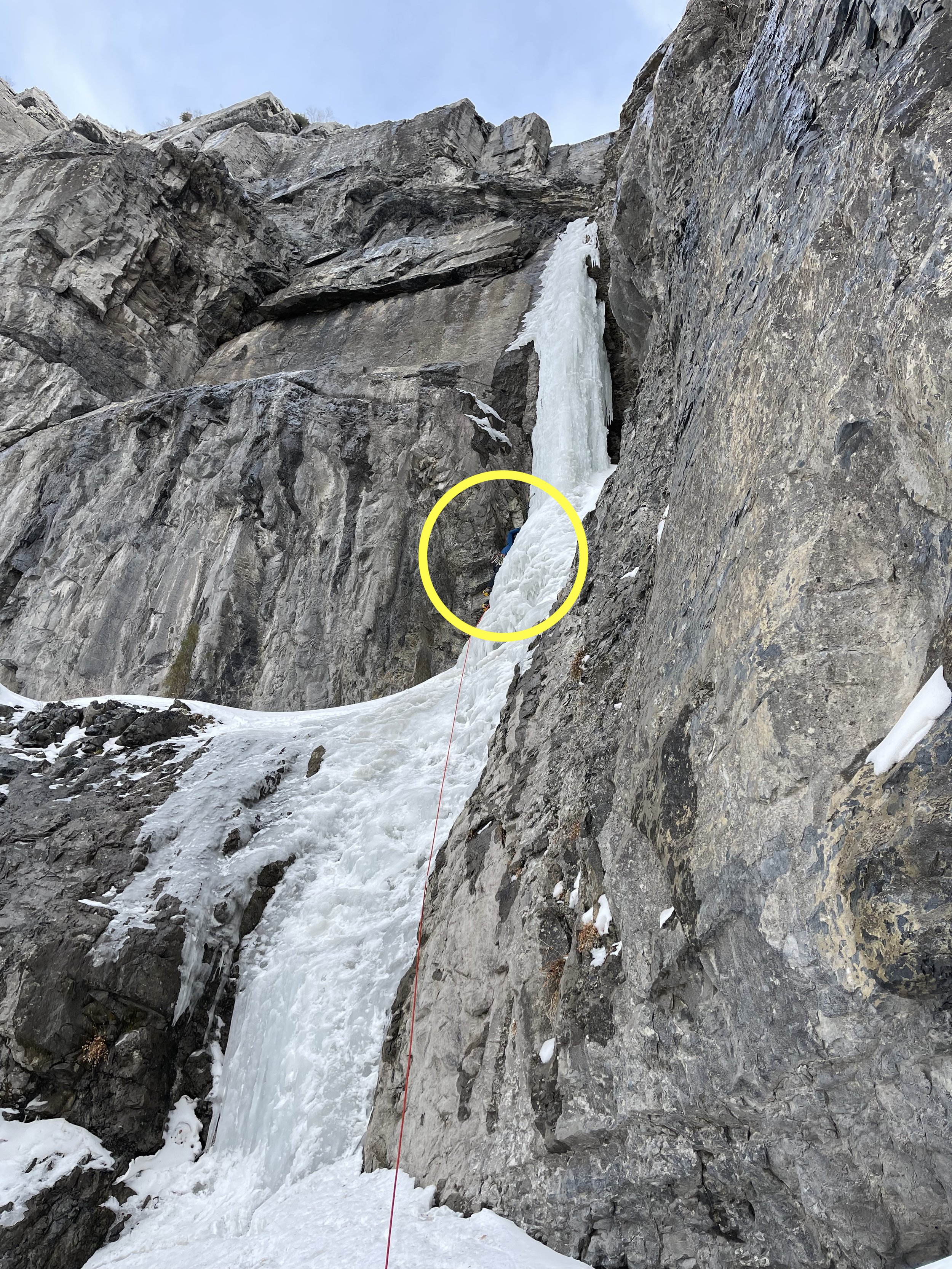Accident data in the United States clearly indicates that the routine task of anchor cleaning is clearly too routine for some of us, and not routine enough for others. The inescapable reality is that experienced and and inexperienced climbers, alike, are susceptible to mishap during this seemingly mundane process.
Every accident on record has a slew of contributing factors, to be sure, and it would be impossible to create best practices that could account for all possible contingencies. However, one common thread indicated by accident reporting and a review of instructional literature is that anchor-cleaning sequences, up to this point, have not necessarily been dictated by any unifying principles or concepts.
This article will attempt to reset the bar on that deficit, and align the reader with a set of value-based decision making tools that inform our recommendations for a generalizable best practice. This article will start with the following assumption: the climbing team consists of a lead climber that has been lowered to the ground, through a redirected top-anchor, the anchor material needs to be retrieved, and the climbing team is operating in a single pitch context with a permanent fixed anchor.
This context is common on any single pitch outing. The climber is toproping, when she arrives at the top of the pitch she will retrieve the anchoring tools.
Often, the climber/cleaner also removes equipment from the climb, equipment that the initial leader left behind.
Certain values should govern the cleaning procedure every time it occurs, and each of these values can be used to analyze the effectiveness of any cleaning sequence.
Those values are as follows:
Changing safety systems, like going on and off belay or switching from being belayed to rappelling, opens up opportunities for error. It also takes time, requires communication and double checks. It is inherently more efficient and safer to use one safety system at all times.
It is valuable for the cleaner to be connected to the climbing rope, in some way, at all times. That way the rope cannot be dropped.
It is valuable to minimize the amount of equipment needed to clean an anchor. If minimal equipment is needed, equipment cannot be forgotten.
Most Generalizable Cleaning Sequence: Lowering off the Rings
The cleaning sequence that best applies the values listed above requires the cleaner to lower off an anchor's rappel rings or quick-links. There are a few reasons this sequence is not more widely adopted. First, the lowering sequence is misapplied and/or misunderstood. Second, there is misplaced sense of stewardship that seeks to preserve anchor hardware.
Many climbers erroneously believe that changing safety systems in unavoidable because they do not necessarily understand that a bight of rope can be pushed through rappel rings. They might also misunderstand the different ways climbers can connect to an anchor. Some connections between a climber and an anchor are critical, and they require strength and security. Like a PAS, a personal tether, or anchoring with the climbing rope and a clove hitch. These kinds of connections are both strong and secure. Combined with a locking carabiner, they are capable of holding over ten times the climbers body weight in some cases.
Second, many climbers misunderstand the actual impacts lowering off the rings make on communal fixed hardware. Lowering off rings, undoubtedly, wears rings out faster than rappelling. But, it is important to remember that the rings are engineered for the purpose of lowering. They are designed to sustain the wear and tear of lowering, and then be replaced. Even if lowering resulted in drastic ring erosion, it is worth considering how a more efficient and safer lowering sequence may be worth it. As accident data surrounding rappelling accumulates, it is worth considering that our friends and family members are more valuable than stainless steel rings, and the only real cost of keeping them safer is replacing rings more frequently.
Having asserted those two common misunderstandings, let’s look at a cleaning sequence that maintains one unremitting safety system (the belay), requires minimal equipment, and never detaches the climbing rope from the cleaner.
Step One: Fifi. Upon arriving at the anchor, the leader can Fifi in to any point in the anchor, but the master point is usually well positioned for this task. A Fifi is a common tool among aid climbers and the concept can be valuable in a cleaning sequence. The idea is to continue to rely on the belay for ultimate security. Why relinquish it? But, the cleaner will want to connect to the anchor somehow so that the cleaning sequence can proceed more efficiently. So, taking a single quickdraw, any of the quickdraws cleaned off the climb for example, and connecting the belay loop to the master point, will allow the cleaner to work without maintaining a stance or a grip on the rock.
Any quickdraw cleaned off the pitch can serve as a "Fifi".
Connecting to the masterpoint with a "fifi" is not anchoring. It's just a place to sit for a minute. No need to say anything to suggest that the belayer should not continue to keep the climber safe.
Step Two: Thread a Bight through the rap ring(s). The cleaner will then call for slack, enough slack to run a bight of rope through the rap ring(s). Once the bight has been passed through the ring, a Figure 8 on a Bight should be tied.
Most rap rings and quicklinks are big enough to pass a bight of rope through. The bight only needs to be big enough to tie a Figure-8-On-A-Bight. Note the hangers are thick rounded steel typically found at belay stations; do not pass rope through the thinner, sharper edged hangers used on route.
Try to imagine the precision in this moment. The bight is now blocked against the rings. If anything were to go wrong, the climber is secured in a way, by that blocked knot. The belayer did not hear anything confusing or distracting like “Off Belay” or “In Direct” or any other command that could suggest that relinquishing the belay is the next step.
Step Three: Clip the Figure on a Bight to the belay loop with a locking carabiner or two non-locking carabiners (opposite and opposed). Once that bight knot is connected to the climber’s belay loop, the climber may call to the belayer for tension, or take. The belay will do so, and the climber’s body weight will now be counterweighted through the rings by the belayer.
In this moment, the climber is connected to the original tie-in, the bight-knot and locking carabiner, and the fifi. It's a good time to double check the system.
Try to imagine the precision of this moment. Even if the belayer somehow misunderstood his/her role in the cleaning sequence, the call to take gives the climber a chance to double check the entire system before initiating any other critical steps. The climber is essentially anchored at this point by the knot block, the bight clipped to the belay loop, and the original tie-in, which still has not been touched.
Step Four: Untie the original tie-in, clean the anchor, and lower. After double checking all the critical links in the system (the belayer, the bight knot, the locking carabiners, and the rope running through the rap rings) the climber can untie his/her original figure 8 follow through. That long tail can be pulled through the rings and allowed to dangle harmlessly behind the cleaner. The anchoring tools can all be removed from the bolts and stowed. The climber can announce that he/she is ready to lower, and allow the belayer to lower to the ground.
When lowering, the tail from the original tie-in will dangle behind the bight knot.
The cleaner never relinquished the belay. The cleaner was never untied from the rope, and therefore did not create an opportunity to drop it. The cleaner only communicated three unambiguous commands to the belayer: “Slack,” “Take, ” and “Ready to Lower.” The cleaner did not need PAS or daisy chain or ATC or friction hitch or a half dozen carabiners to complete this sequence.
Most anchor cleaning should happen in this way; it is the generalizable case.






















